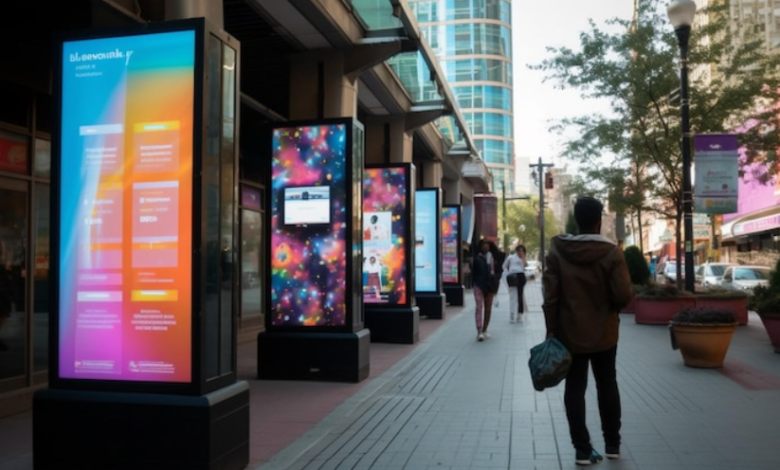High Brightness Display: The Ultimate Guide to Superior Visibility and Performance

What is a High Brightness Display?
A High Brightness Display refers to a screen engineered to deliver exceptional luminance, allowing clear visibility even in direct sunlight or brightly lit environments. Unlike standard displays, which typically emit around 250–350 nits of brightness, high brightness displays often exceed 1,000 nits or more, making them ideal for outdoor kiosks, digital signage, and industrial equipment.
These displays are built with specialized backlighting systems, optical coatings, and thermal controls to maintain vivid colors and contrast, regardless of ambient lighting. As technology advances, they’ve become increasingly popular in industries that demand reliability, clarity, and round-the-clock visibility.
Understanding Brightness and Nits
Brightness is measured in nits (cd/m²) — a metric representing how much light a display emits per square meter. The higher the nit count, the more visible the display becomes under bright lighting. For context:
- Typical indoor monitors: 250–350 nits
- Laptops: 300–500 nits
- Outdoor digital signage: 1,000–2,500 nits
- Sunlight-readable professional screens: 3,000+ nits
Choosing the right brightness level depends on the intended environment. Displays under 500 nits can appear washed out in sunlight, while those above 1,000 nits maintain excellent visibility outdoors.
See also: Luxury Sofas in New Zealand Upgrade Your Home Today
Difference Between Standard and High Brightness Displays
| Feature | Standard Display | High Brightness Display |
|---|---|---|
| Brightness | 250–400 nits | 1,000–5,000 nits |
| Visibility in Sunlight | Poor | Excellent |
| Power Consumption | Low | Moderate to High |
| Application | Indoor | Outdoor/Industrial |
| Lifespan | Average | Extended (with cooling systems) |
The key difference lies in the luminance and durability. High brightness displays are not just brighter—they are engineered with anti-reflective coatings, enhanced thermal management, and superior contrast ratios, ensuring consistent performance over time.
Key Features of a High Brightness Display
Enhanced Visibility in Sunlight
One of the defining features of a high brightness display is its sunlight readability. Anti-glare coatings and high luminance levels ensure content remains visible even in full daylight, making them perfect for transportation terminals, outdoor retail signage, and public kiosks.
Automatic Brightness Control
These displays often come equipped with ambient light sensors that automatically adjust brightness based on the surrounding light conditions. This not only improves energy efficiency but also extends the display’s lifespan by reducing unnecessary backlight strain.
Durability and Energy Efficiency
High brightness screens are built using industrial-grade components that withstand temperature fluctuations, humidity, and dust. Many models incorporate LED backlights for energy efficiency and advanced heat dissipation systems to manage thermal buildup.
Technology Behind High Brightness Displays
LED Backlighting Technology
LED backlights provide consistent illumination across the screen. They’re more efficient than older CCFL (Cold Cathode Fluorescent Lamp) technologies and can be fine-tuned to achieve extremely high luminance while maintaining color accuracy.
LCD vs OLED for High Brightness Displays
- LCD Displays: Offer stable brightness, durability, and cost-effectiveness.
- OLED Displays: Provide better contrast and color accuracy but may struggle under direct sunlight and can degrade faster under high luminance.
Optical Bonding for Improved Clarity
Optical bonding eliminates the air gap between the LCD and the cover glass, reducing internal reflections and improving contrast. It enhances both sunlight readability and structural integrity, making the display more shock-resistant.
Applications of High Brightness Displays
Outdoor Digital Signage
Outdoor advertising heavily relies on high brightness displays for maximum visibility. Whether it’s a digital billboard or a restaurant menu board, these displays ensure messages stay readable under any lighting condition.
Marine and Aviation Displays
In cockpits and ship control panels, where sunlight exposure is constant, high brightness displays provide clear, glare-free visuals, ensuring safety and operational accuracy.
Automotive and Industrial Applications
In vehicles and industrial machines, displays must perform reliably under vibration, dust, and variable lighting. High brightness touchscreens are increasingly used in dashboards, factory monitors, and rugged devices.
Benefits of Using High Brightness Displays
Superior Readability and User Experience
With enhanced brightness and color fidelity, users experience clear visuals without squinting or adjusting angles. This improves accessibility and ensures uninterrupted viewing even in challenging lighting.
Longer Lifespan and Reliability
Designed for 24/7 operation, these displays feature temperature control mechanisms and anti-blackening technology, preventing pixel burnouts caused by prolonged sunlight exposure.
Factors to Consider When Choosing a High Brightness Display
Brightness Level (Nits Rating)
For outdoor use, choose at least 1,000 nits; for direct sunlight exposure, go above 2,500 nits.
Resolution and Color Accuracy
Higher resolution ensures detailed visuals. Combining Full HD or 4K resolution with accurate color reproduction enhances user engagement.
Temperature Range and Ruggedness
Industrial displays must operate in extreme conditions (−30°C to +70°C). Ensure the unit includes IP-rated enclosures for water and dust protection.
Top Industries Adopting High Brightness Displays
Retail and Advertising
Retailers use bright, dynamic screens for storefront promotions, attracting more foot traffic and improving customer engagement.
Transportation and Smart Cities
From airports to train stations, high brightness screens deliver real-time updates that remain readable even in daylight.
Challenges and Limitations
Despite their benefits, high brightness displays face challenges:
- Higher power consumption
- Increased heat generation
- Greater upfront costs
However, advancements like mini-LED and micro-LED technologies are addressing these issues by enhancing brightness while reducing energy usage.
Future of High Brightness Display Technology
The future promises energy-efficient, eco-friendly, and ultra-bright screens. Innovations such as mini-LED backlights, improved optical bonding, and AI-based brightness adjustment will drive the next wave of display evolution.
FAQs About High Brightness Displays
Q1. What is the ideal brightness for outdoor displays?
At least 1,000 nits, though 2,500+ nits is recommended for direct sunlight.
Q2. Are high brightness displays energy-efficient?
Modern models with LED backlighting are more efficient, using sensors to adjust brightness automatically.
Q3. Can high brightness displays be used indoors?
Yes, especially in areas with strong ambient light, such as atriums or glass-walled offices.
Q4. Do they require special cooling systems?
Yes, many include thermal management systems to prevent overheating during prolonged high brightness operation.
Q5. Are high brightness displays waterproof?
Outdoor versions are often IP65-rated or higher, ensuring resistance to dust and water.
Q6. Where can I buy industrial-grade high brightness displays?
You can find them at major manufacturers such as Samsung Display, LG Display, or AU Optronics (learn more here).
Conclusion: The Bright Future of Display Technology
High Brightness Displays have revolutionized how information is shared outdoors and in industrial environments. Their superior visibility, durability, and adaptability make them a cornerstone of modern digital communication. As technology advances, expect even brighter, smarter, and more energy-efficient displays that redefine visual clarity.




